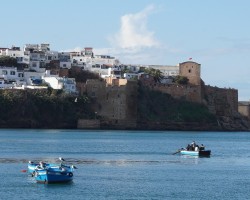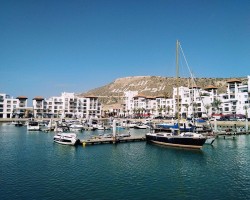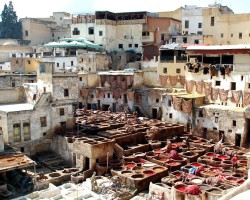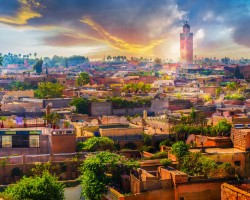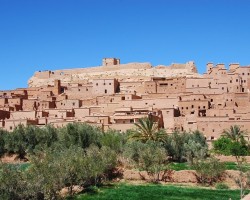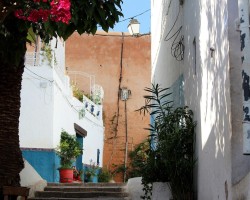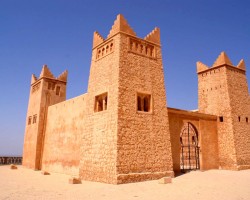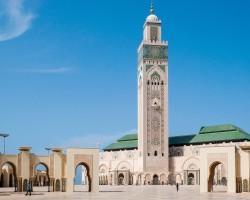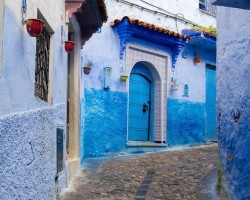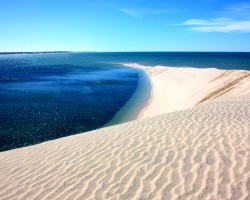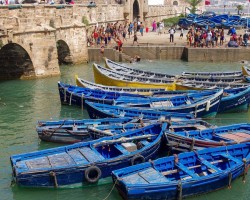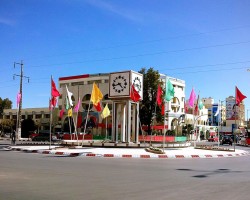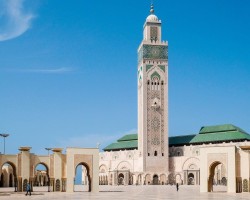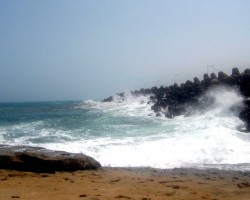Best time to go to Morocco for a perfect weather and where to go?
When is the best time to go to Morocco?
Thanks to its great climatic diversity, it is possible to travel to Morocco all year round. The country, stretching lengthwise, also has a varied geography that influences the climate: mountains, the Sahara Desert to the south, the Atlantic coast to the west, and the Mediterranean Sea to the north.
Therefore, the best time to visit Morocco depends on the region you want to visit, but also on the experience you want to have.
When to go to Morocco based on your interests?
- For hiking and trekking in the mountains, the months of July and August have perfect weather: the sun shines, but the heat remains reasonable. It is therefore the best time to explore the Rif and the Atlas.
- For relaxing and enjoying the beach on the Atlantic coast or along the Mediterranean, the ideal period is between June and October. However, if you prefer to have the beach to yourself, avoid July and August.
- For exploring the imperial cities without the tourist crowds, it is best to choose the intermediate seasons, in March and April and from October to mid-November. The temperatures will be very pleasant during the day, but the nights are cool.
- For experiencing local culture, the Ramadan period can be an interesting time to travel to Morocco (check the dates, as they vary each year). At sunset, when the fast is broken, Moroccans gather to share a festive meal and will be delighted to share it with passing travelers. However, be aware that it is less convenient to eat properly during the day.
With a highly diversified climate depending on the seasons, regions, and time of day, packing can be a real headache. Here is a general idea of what you should pack:
- In winter: on the coasts, mid-season clothing is recommended, as well as a waterproof jacket in case of rain and a sweater for the evening. Inland, add an extra layer, as the nights can be particularly cold. For mountainous regions, take warm clothes, including a hat, gloves, and a down jacket. In the desert, pack light clothes for the day and something to cover yourself in the evening, along with a scarf to protect yourself from the sand.
- In summer: if you are traveling along the coast, pack light clothes, a long-sleeved shirt for the evening, and a warmer sweatshirt if you are heading to Agadir or Essaouira. For inland regions and the desert, wear very light, loose-fitting clothes made of natural fibers (cotton or linen), a hat, sunglasses, and a scarf to protect yourself from the sand-laden wind. If you are going to the mountains, bring an extra sweater and jacket, as well as good walking shoes.
- For women, it is best to avoid short clothing, such as shorts or skirts, as well as low-cut tops, especially when traveling to less touristy areas.
Where and when to go based on the weather?
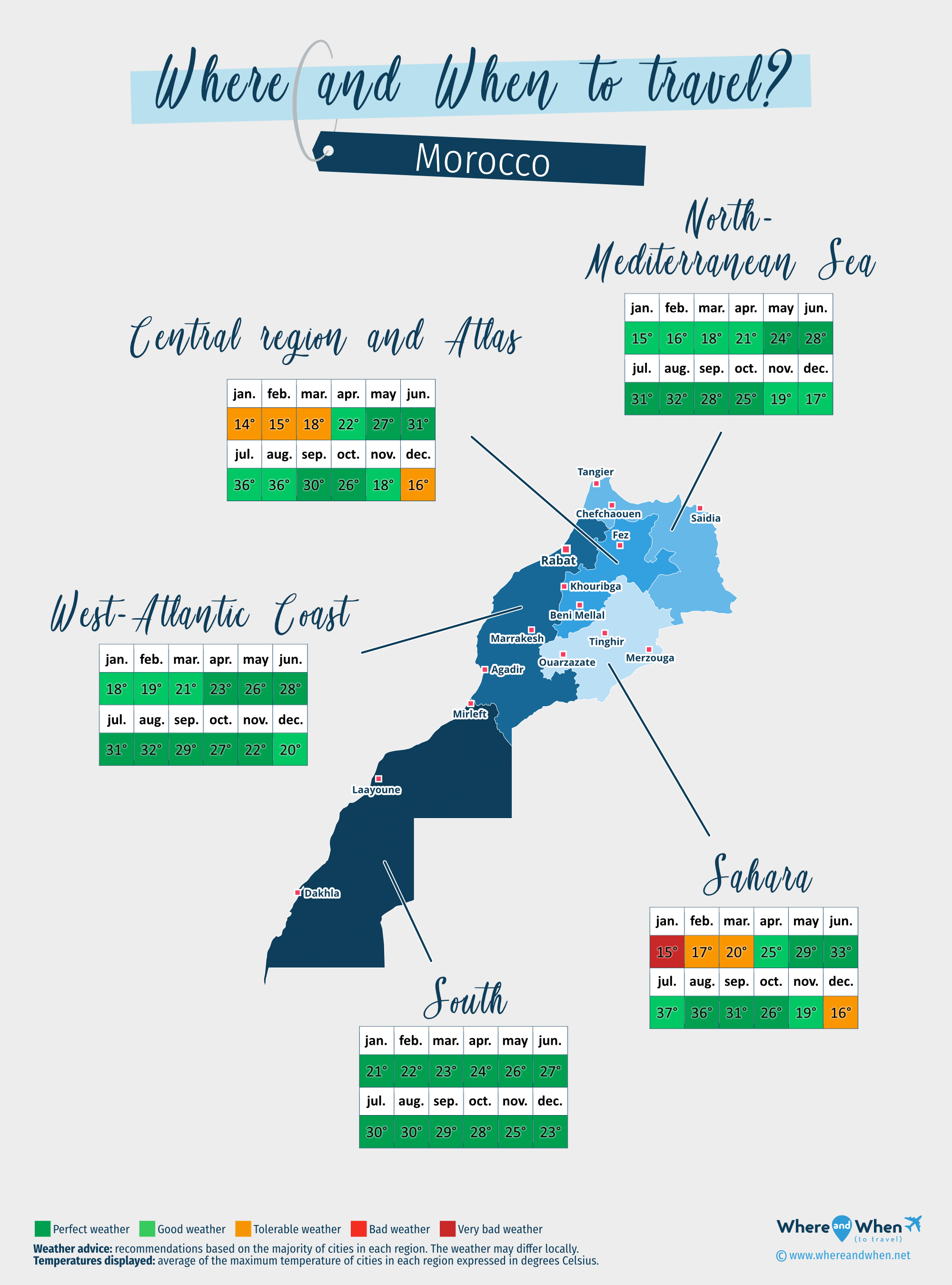
Central region and Atlas
Fez, Beni Mellal, Khouribga...
North - Mediterranean Sea
Tangier, Saidia, Chefchaouen...
Sahara
Ouarzazate, Merzouga, Tinghir...
South of Morocco
Dakhla, Mirleft, Laayoune...
West - Atlantic Coast
Rabat, Marrakesh, Agadir...
To get all the information about the climate and weather in Morocco for a specific month, click on the corresponding link below:
Morocco in january Morocco in february Morocco in march Morocco in april Morocco in may Morocco in june Morocco in july Morocco in august Morocco in september Morocco in october Morocco in november Morocco in december
Best time to travel to Morocco by cities
Climate and Weather in Morocco
Located on the African continent, between Algeria and Mauritania, and not far from the coasts of Spain, Morocco generally has mild winters and hot summers.
The weather in Morocco varies greatly due to its geography, the region you are in, and even depending on the time of day. Thus, the country experiences four distinct types of climates:
- Mediterranean on the north coast.
- Oceanic along the Atlantic coasts.
- Continental in the interior of the country.
- Desert in the south, in the Sahara Desert.

Climate of Morocco on the Atlantic coast
The country has about 1300 km of coastline along the Atlantic Ocean, a perfect playground for beach and water sports enthusiasts! Winters are mild there, and summers are particularly hot and beautiful. The only exception: the month of August on the side of Essaouira and Agadir can be cool due to humid winds that blow almost every day. Between May and August, it is also very likely that thick fog will form in the morning. No need to worry, it quickly gives way to the sun! The rainy season extends from November to March. If you want to swim, know that the waters of the Atlantic are cool all year round, even in the middle of summer. It may be wise to bring a light wetsuit.
Climate on the northern coast of Morocco
The northern coast of Morocco, facing the Mediterranean Sea, benefits from a Mediterranean climate:
- Summers are hot and dry.
- Spring and autumn offer very pleasant sunny days. It can even get very hot as early as the beginning of April.
- Winters are much less rainy than on the Atlantic coast, especially around Tanger, in the northwest.
Inland, in the Rif Mountains, the climate is much cooler and winters are harsh, with frequent snowfall. Fog is also very present until the end of May.
Climate in the interior of the country
The interior of the country benefits from a continental climate. The weather is therefore hotter and drier than on the Atlantic coast. The climate is very pleasant, especially in cities like Marrakech, where the temperature often exceeds 20°C (68°F) in winter. However, if you are afraid of heat, summer should be avoided: it is not uncommon for temperatures to approach 40°C (104°F) , which can be challenging.
Climate in the south of the country
Sparsely populated, the south of Morocco has a desert climate with the presence of the Western Sahara. Summer temperatures there are particularly high, making some days difficult to bear. To visit this region, it is therefore best to choose winter and the transitional seasons. A small peculiarity: the Sahara Desert extends to the coast, so you can find more moderate temperatures there thanks to the Atlantic Ocean and its many sea breezes.
Temperatures and rainfall in Morocco
On these 3 graphs, we present the evolution of temperatures of Morocco and month-by-month rainfall for the cities of Rabat, Agadir, Fez, Marrakesh and Ouarzazate, as well as the month-by-month sea temperature for coastal cities.
Peak visitor numbers and tourist seasons in Morocco
Find out when Morocco has its high tourist season (the period when the influx of tourists is highest) and off-peak tourist season using our data and figures.
Tourist seasons in Morocco
The months with low numbers of tourists are: January, February, March, May, June, July, September and November. The number of visitors to Morocco is high in: April, August, October and December.
- Very low season in Morocco: January, February, March, June and November.
- Low season in Morocco: May, July and September.
- High season in Morocco: April, October and December.
- Peak season in Morocco: August.
Figure: Visitor index for Morocco month by month
Average price for flights to Morocco
A return flight between Montreal and Casablanca is generally cheaper if you go in february ($ 788 on average): this is the best time for travellers on a tight budget. In contrast, you may end up paying $ 445 more for your airline ticket to Casablanca if you go in july.
Find the best price for your flight Flight prices to Morocco
Where to go in Morocco?
This table allows you to see the maximum temperature for each city and our opinion on the weather month by month (see colour legend below the table).
| Cities | jan. | feb. | mar. | apr. | may | jun. | jul. | aug. | sep. | oct. | nov. | dec. |
| Rabat | 65°F | 65°F | 68°F | 70°F | 76°F | 79°F | 83°F | 85°F | 83°F | 79°F | 70°F | 67°F |
| Agadir | 72°F | 74°F | 76°F | 77°F | 83°F | 86°F | 94°F | 94°F | 88°F | 85°F | 77°F | 74°F |
| Fez | 59°F | 63°F | 67°F | 74°F | 81°F | 88°F | 97°F | 99°F | 88°F | 81°F | 68°F | 63°F |
| Marrakesh | 67°F | 70°F | 76°F | 79°F | 85°F | 92°F | 101°F | 101°F | 92°F | 86°F | 76°F | 70°F |
| Ouarzazate | 61°F | 65°F | 70°F | 77°F | 85°F | 92°F | 99°F | 97°F | 88°F | 79°F | 68°F | 63°F |
| Tangier | 61°F | 61°F | 63°F | 67°F | 72°F | 77°F | 81°F | 83°F | 79°F | 76°F | 67°F | 63°F |
| Beni Mellal | 61°F | 63°F | 67°F | 72°F | 79°F | 86°F | 95°F | 94°F | 85°F | 77°F | 67°F | 65°F |
| Casablanca | 67°F | 67°F | 70°F | 72°F | 77°F | 79°F | 83°F | 85°F | 83°F | 79°F | 72°F | 68°F |
| Chefchaouen | 59°F | 59°F | 61°F | 65°F | 70°F | 76°F | 81°F | 83°F | 77°F | 72°F | 65°F | 61°F |
| Dakhla | 74°F | 72°F | 72°F | 72°F | 74°F | 76°F | 77°F | 81°F | 81°F | 79°F | 76°F | 74°F |
| Essaouira | 67°F | 68°F | 70°F | 72°F | 76°F | 79°F | 83°F | 85°F | 81°F | 79°F | 74°F | 70°F |
| Khouribga | 63°F | 65°F | 70°F | 76°F | 83°F | 90°F | 99°F | 99°F | 88°F | 83°F | 70°F | 65°F |
| Laayoune | 72°F | 74°F | 76°F | 77°F | 79°F | 83°F | 86°F | 88°F | 85°F | 83°F | 77°F | 74°F |
| Merzouga | 63°F | 67°F | 74°F | 83°F | 90°F | 99°F | 106°F | 103°F | 94°F | 85°F | 72°F | 63°F |
| Mirleft | 65°F | 67°F | 68°F | 70°F | 74°F | 76°F | 79°F | 81°F | 77°F | 77°F | 72°F | 68°F |
| Saidia | 61°F | 63°F | 67°F | 70°F | 76°F | 83°F | 88°F | 90°F | 83°F | 77°F | 68°F | 65°F |
| Tinghir | 59°F | 63°F | 68°F | 77°F | 85°F | 92°F | 101°F | 99°F | 88°F | 79°F | 67°F | 61°F |
| Ain Aicha | 59°F | 63°F | 67°F | 74°F | 81°F | 88°F | 97°F | 99°F | 88°F | 81°F | 68°F | 63°F |
| Ain Leuh | 50°F | 54°F | 59°F | 67°F | 74°F | 83°F | 92°F | 92°F | 81°F | 74°F | 59°F | 54°F |
| Aousserd | 67°F | 67°F | 70°F | 72°F | 77°F | 79°F | 83°F | 85°F | 83°F | 79°F | 72°F | 68°F |
Legend:
perfect weather
good weather
tolerable weather
very bad weather
About Morocco
What can I do in Morocco?
Beaches / swimming
Nature and countryside
Culture and heritage
Sports
Family travel
Crafts / shopping
Gastronomy
Nightlife
Is this weather information for Morocco reliable?
Climate data for Morocco has been gathered every day since January 2009. The analysis of these meteorological data for Morocco allows us to determine the average for each month in Rabat, Agadir, Fez, Marrakesh, Ouarzazate, Tangier, Beni Mellal, Casablanca, and 80 other cities.
So yes: this data is reliable except in cases of temporary climate disruption in the region.

